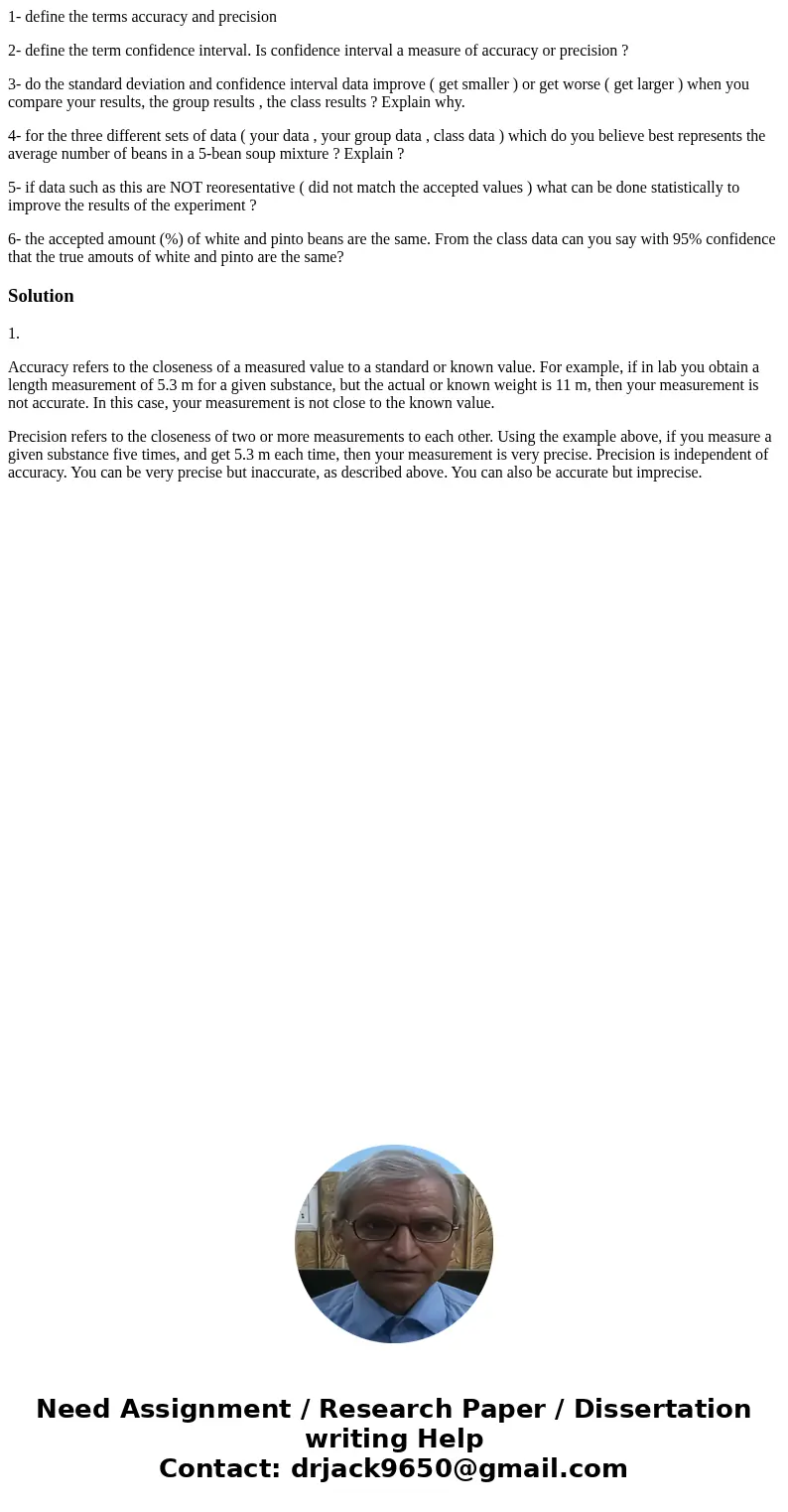1 define the terms accuracy and precision 2 define the term
1- define the terms accuracy and precision
2- define the term confidence interval. Is confidence interval a measure of accuracy or precision ?
3- do the standard deviation and confidence interval data improve ( get smaller ) or get worse ( get larger ) when you compare your results, the group results , the class results ? Explain why.
4- for the three different sets of data ( your data , your group data , class data ) which do you believe best represents the average number of beans in a 5-bean soup mixture ? Explain ?
5- if data such as this are NOT reoresentative ( did not match the accepted values ) what can be done statistically to improve the results of the experiment ?
6- the accepted amount (%) of white and pinto beans are the same. From the class data can you say with 95% confidence that the true amouts of white and pinto are the same?
Solution
1.
Accuracy refers to the closeness of a measured value to a standard or known value. For example, if in lab you obtain a length measurement of 5.3 m for a given substance, but the actual or known weight is 11 m, then your measurement is not accurate. In this case, your measurement is not close to the known value.
Precision refers to the closeness of two or more measurements to each other. Using the example above, if you measure a given substance five times, and get 5.3 m each time, then your measurement is very precise. Precision is independent of accuracy. You can be very precise but inaccurate, as described above. You can also be accurate but imprecise.

 Homework Sourse
Homework Sourse